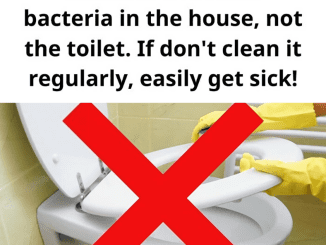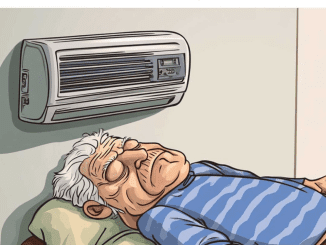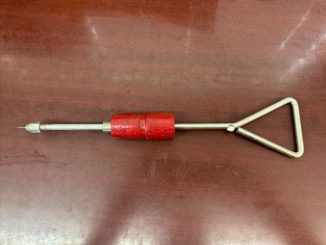Sebaceous filaments are a natural and essential part of your skin’s oil regulation process, yet they are often misunderstood. Many people confuse sebaceous filaments with blackheads, mistaking them for something that needs to be removed. In reality, sebaceous filaments play an important role in keeping your skin hydrated and healthy. This article will dive into what sebaceous filaments are, how they differ from blackheads, and what you can do to manage them.
What Are Sebaceous Filaments?

Sebaceous filaments are tiny, thread-like structures that line your sebaceous (oil) glands. These filaments help move sebum, an oily substance produced by the sebaceous glands, to the surface of your skin. Sebum is responsible for keeping your skin and hair moisturized and shiny. When your body produces more oil, sebaceous filaments can become more noticeable, especially around areas like the nose, chin, and forehead.
While sebaceous filaments are perfectly normal and part of your skin’s functioning, they can sometimes become prominent, leading to confusion about their purpose and whether or not they need to be removed.
Sebaceous Filaments vs. Blackheads: What’s the Difference?
It’s common to confuse sebaceous filaments with blackheads, but they are not the same thing. Blackheads are a type of acne, forming when excess oil and dead skin cells clog a pore, creating a dark plug. Blackheads are open to the air, which causes the plug to oxidize and turn black or dark brown.
Sebaceous filaments, on the other hand, do not form plugs. Instead, they allow sebum to flow freely to the skin’s surface. Visually, sebaceous filaments appear as small, flat, and light-colored spots, usually gray, light brown, or yellow. They may look similar to blackheads at first glance, but they are much smaller and less raised. If you were to squeeze a sebaceous filament, a thin, waxy substance might come out, but unlike blackheads, they don’t involve a blockage of the pore.
What Causes Sebaceous Filaments to Become More Visible?
Several factors can make sebaceous filaments more noticeable, including:
- Age: During puberty, sebaceous glands grow larger and produce more oil, making sebaceous filaments more visible. As you age, skin may loosen or sag, and pores may become larger, making sebaceous filaments stand out more.
- Skin care: Over-washing or excessive sun exposure can dry out your skin. In response, sebaceous glands work overtime to produce more oil, causing sebaceous filaments to become more prominent.
- Hair follicle thickness: Thicker hair follicles can make sebaceous filaments easier to see.
Are Sebaceous Filaments Bad for Your Skin?
Sebaceous filaments are not harmful. They are a natural part of your skin’s oil production system and help keep your skin hydrated. However, if they become too noticeable, you might feel the need to minimize their appearance. But remember, their presence is normal, and they serve an essential purpose.
How to Manage Sebaceous Filaments
While you can’t get rid of sebaceous filaments entirely, you can manage their appearance with a proper skin care routine. Here are some effective methods:
1. Exfoliation
Using an exfoliating scrub can help remove dead skin cells and prevent your pores from looking clogged. Be gentle with exfoliation, and avoid harsh scrubs that can damage your skin. Regular exfoliation can help keep your skin smooth and prevent sebaceous filaments from becoming too obvious.
2. Salicylic Acid
Salicylic acid is a common ingredient in acne-fighting products. It helps exfoliate the top layer of the skin and dissolve dead skin cells, preventing clogged pores. Using a salicylic acid cleanser can keep sebaceous filaments at bay by controlling oil production.
3. Retinoids

Retinoids, like Retin-A, Tazorac, and Differin, are powerful treatments that can reduce the appearance of sebaceous filaments. These vitamin A derivatives speed up skin cell turnover, which helps prevent clogged pores. However, retinoids can be drying, so it’s best to use them with a moisturizer to prevent irritation.
4. Moisturizing
Keeping your skin properly hydrated can actually help balance oil production. Using a noncomedogenic moisturizer can help keep your skin from overproducing oil, reducing the appearance of sebaceous filaments.
Should You Squeeze Sebaceous Filaments?
It can be tempting to squeeze sebaceous filaments to try to remove them, but this is not a recommended practice. Squeezing can irritate your skin, cause inflammation, and potentially lead to permanent damage like scarring. Even if you manage to squeeze out some oil, the filaments will refill within a month because your sebaceous glands continue to produce sebum. It’s best to avoid squeezing and instead focus on a proper skin care routine to keep them under control.
Do Pore Strips Help with Sebaceous Filaments?
Pore strips, which are often used to remove blackheads, can also remove sebaceous filaments. However, using them too frequently may dry out your skin and disrupt the natural balance of sebum, which can lead to overproduction of oil. Additionally, pore strips can sometimes damage the skin’s surface, making it easier for bacteria to enter and cause acne. If you choose to use pore strips, do so sparingly.
Prevention: Keeping Sebaceous Filaments in Check

While sebaceous filaments are a natural part of your skin, you can take steps to minimize their appearance and maintain overall skin health:
- Wash your face daily with warm water and a mild cleanser to remove excess oil.
- Use products labeled “noncomedogenic” to prevent pore clogging.
- Exfoliate regularly to keep dead skin cells from building up.
- Apply moisturizer to keep your skin hydrated and reduce oil overproduction.
- Avoid touching your face throughout the day, as this can transfer oil and dirt.
Conclusion: Embrace Your Skin’s Natural Functions
Sebaceous filaments are a normal part of your skin’s anatomy. While they can sometimes become more noticeable, they are not a sign of poor skin health. With a proper skin care routine, you can manage their appearance and keep your skin looking healthy and balanced. Rather than trying to eliminate sebaceous filaments, focus on maintaining overall skin health and embracing the natural processes that keep your skin hydrated and protected.


